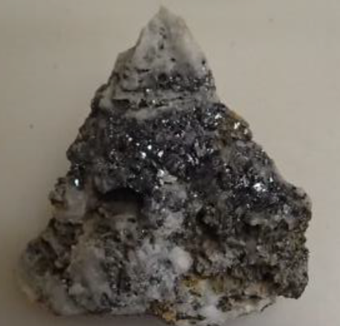Silver became widely used for coinage in the Roman world from the 7th century BCE onward and provided a standardized monetary system for ancient Mediterranean civilizations.
The problem is that it is difficult to determine which deposits Roman miners exploited because most of them have been depleted.
However, the ones that still stand in the southern region contain galena, which is the main ore of lead and an important source of silver. To track the source of Roman silver, the team analyzed the silver and lead compositions of galena samples from some of those deposits and compared the results to the chemical signatures of silver Roman coins.

They identified two different types of galena deposits based on the silver elemental composition of the samples: silver-rich galena that would have been a likely source for Roman coinage, and silver-poor galena that would have been exploited for lead and would have been of lower economic importance.
Yet, few of the ore samples had a composition that fit the silver elemental composition of the Roman silver coins. Silver-bearing ores spanned a wide range in compositional variability, but Roman coins notably have a very narrow elemental composition range.
Based on the lead elemental signatures of the galena samples, the ore deposits from southeastern Spain best fit the composition of Roman coins, suggesting that these deposits were a major source of Roman silver. Both silver-rich and silver-poor galena deposits were likely exploited there, with the extracted lead from silver-poor galena able to be mixed with other ores to extract silver.
These results based on chemical analyses are also consistent with archaeological evidence for ancient mining exploitation in the region.
“This work needs to be extended to the silver-rich region in which coinage was actually invented in the 6th century BCE, Greece and Asia Minor (modern Turkey),” Milot said in a media statement. “The method we describe here will allow us to recognize the lost ore fields which supplied silver to the Eastern Mediterranean empires from the Bronze Age to the collapse of Hellenistic kingdoms.”




